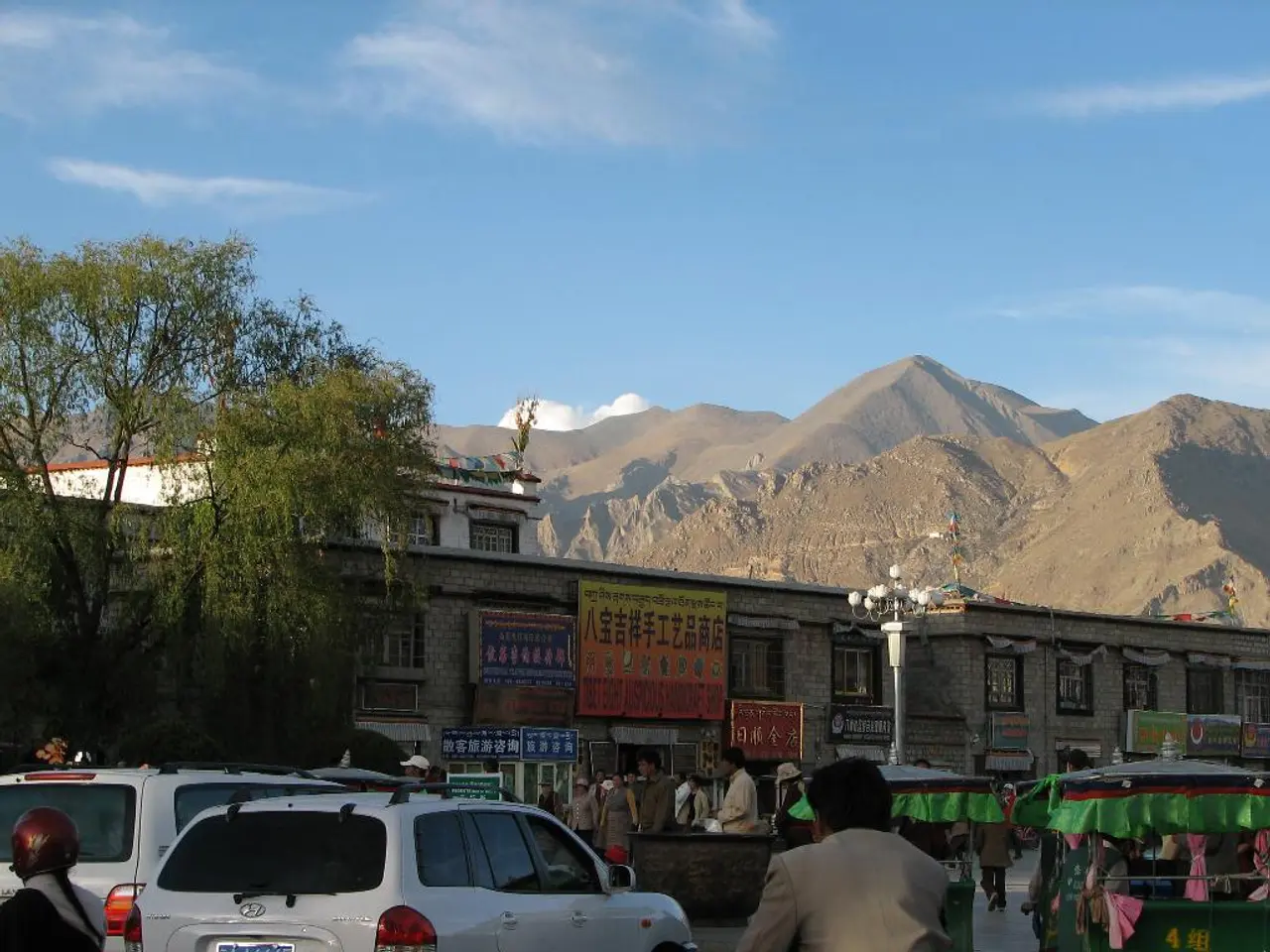Holidaymakers are facing action from authorities in the Allgäu region
Mountainous and heavily touristic regions, such as Tyrol in Austria and Allgäu in Germany, are grappling with traffic congestion. To address this issue, authorities are implementing a combination of traffic management, environmental protection, and promotion of sustainable transport.
In Tyrol, the state government has imposed restrictions over the weekends to prevent traffic from leaving the highways, especially during peak vacation seasons, such as the Innsbruck area. Local residents in mountain villages have expressed satisfaction with these measures.
German authorities are also taking action. The aim is to network decision-makers to explore approaches to improve the traffic situation and identify concrete options for action in a coordinated and joint manner. A round table discussion, moderated by the Swabian government president Barbara Schretter, is scheduled for the end of September, involving all parties, district offices, representatives of the State Building Authority, and the police.
The Brenner route, which continues towards Italy, is another area of concern due to heavy congestion. The regional state parliamentarian Andreas Kaufmann (CSU) has initiated a petition to the Bavarian Landtag regarding traffic issues in affected municipalities. Representatives from Tyrol, especially in the border area around Fernpass with the recently incorporated municipality of Reutte, are expected to participate.
Berlin is open to closures and driving bans, according to Stephan Stracke, to solve the traffic problem in Allgäu. Signs with the inscription "Stay on the highway" are to be set up, and digital displays are planned at the Inntaldreieck in Rosenheim where routes from Innsbruck, Salzburg, and Munich converge. The Ostallgäu could be helped in tackling traffic issues by potential action against traffic escapees at other locations, such as the Upper Bavarian highways A8 and A93 at Rosenheim.
In addition to traffic restrictions, authorities are promoting alternative routes and transport modes. To reduce congestion on main alpine transit routes, authorities encourage use of rail services, especially for long-distance and cross-border travel. EU-funded projects piloting new rail passenger services aim to make trains more attractive, helping decarbonization efforts and reducing road traffic congestion in alpine areas, including transnational routes.
Coordination between German and Austrian authorities is also crucial, given the transnational nature of alpine routes. Bilateral cooperation involves coordinated traffic management, sharing information on congestion, and harmonizing rules for heavy vehicles to minimize bottlenecks.
Sustainable tourism and environmental protection are also integral parts of the strategy. Regulations often complement congestion controls with environmental zones or measures limiting pollutant emissions, thus influencing the traffic flow in these sensitive regions. Encouraging eco-friendly alternatives reduces the impact of tourism-related car use.
While direct details on the newest local traffic regulations specifically for Tyrol or Allgäu were not found, the general approach aligns with EU strategies for alpine regions to reduce road congestion and emissions. The CSU federal parliamentarian Stephan Stracke has approached the Federal Ministry of Transport, as his constituency is in the affected region, highlighting the ongoing efforts to address these issues.
- In light of traffic problems in Tyrol and Allgäu, local authorities are imposing restrictions, such as weekend highway restrictions and roundtable discussions with various parties, to manage traffic congestion.
- Beyond traffic control measures, authorities are working towards promoting sustainable alternatives, like rail services and eco-friendly transport modes, to reduce congestion and align with European Union emission reduction strategies in alpine regions.
- In order to effectively address traffic issues, coordination is crucial between German and Austrian authorities, as they strive towards harmonized rules for heavy vehicles and shared information on congestion to minimize bottlenecks on transnational alpine routes.





